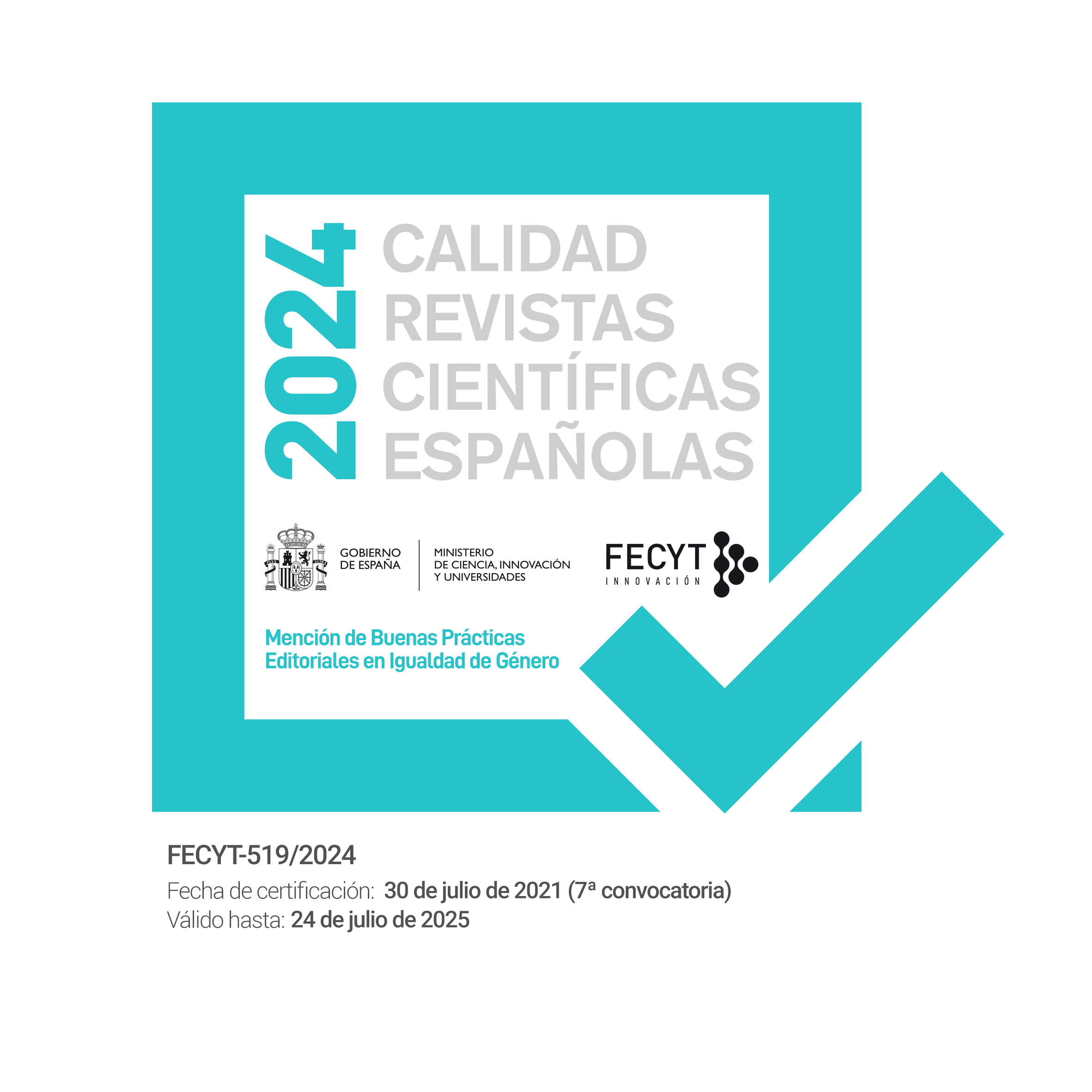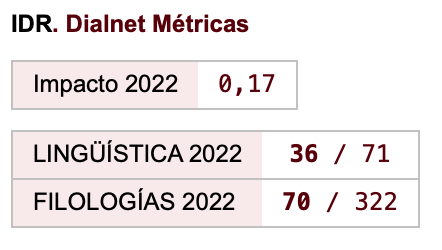The use of subtitled TV series as a didactic resource for the EFL class in higher education
Keywords:
EFL, u-learning, TV Series, Subtitles, Listening, Speaking, Vocabulary, TeachingAbstract
Language teaching models are constantly changing. From learning based on a system of in-class, repetitive, grammar-oriented activities, we have moved to ubiquitous learning (u-learning), where the resources and tools used gain importance compared to elements such as time and space. In this scenario, TV series with integrated subtitles appear as a resource to improve listening, speaking and vocabulary skills among Spanish students of English as a Second Language (ESL). The main objective of this article is to present a case study that includes watching TV series as a continuous activity outside the classroom to motivate university students to achieve a real improvement in listening, speaking and vocabulary skills. This gives an additional boost to students’ language competences and introduces an extra motivation factor for them to continue using English outside the academic environment.
Downloads
References
Al-Biruni, A. R. (1910). Chapter XVI: Notes on the Writing of the Hindus, on their Arithmetic and Related Subjects, and on Certain Strange Manners and Customs of theirs. In E. C. Sachau (Ed.), Alberuni’s India: An Account of the Religion, Philosophy, Literature, Geography, Chronology, Astronomy, Customs, Laws and Astrology of India about AD 1030 (pp. 170–186). K. Paul, Trench, Trübner & Co., ltd.
Álvarez Gil, F. J. (2022). Análisis de textos audiovisuales para la enseñanza de contenidos históricos en la especialidad de Filología Inglesa. En Felipe Morales, A.; Cremades García, R.; Villanueva Roa, J. Comunicando en el siglo XXI: Avances metodológicos y nuevas estrategias, 86-96. Tirant lo Blanch.
Álvarez-Gil, F. J., & Alonso-Almeida, F. (2017). El cine como herramienta didáctica para la inclusión del elemento cultural en la clase de inglés como lengua extranjera. Revista Educação e Linguagens, 6(11), 44–62.
Araújo Vila, N., Fraiz Brea, J. A., & Cardoso, L. (2019). The influence of sociodemographic variables on audiovisual consumption: The case of Spain. Social Sciences, 8(8), 1–17.
Azaryad Shechter, D. (2018). Overcoming the Grammar Barrier in Foreign Language Learning: The Role of Television Series. Journal of Language and Education, 4(2), 59–72. https://doi.org/10.17323/2411-7390-2018-4-2-59-72
Bailey, K. M. (2003). Speaking. In D. Nunan (Ed.), Practical English Language Teaching (pp. 47–66). McGraw-Hill/Contemporary.
Boronat, F., Montagud, M., Marfil, D., & Luzon, C. (2018). Hybrid Broadcast/Broadband TV Services and Media Synchronization: Demands, Preferences and Expectations of Spanish Consumers. IEEE Transactions on Broadcasting, 64(1), 52–69.
Castro, D., & Cascajosa, C. (2020). From Netflix to Movistar+: How Subscription Video-on-Demand Services Have Transformed Spanish TV Production. JCMS: Journal of Cinema and Media Studies, 59(3), 154–160.
Cenoz, J., & Lecumberri, M. L. G. (1999). The acquisition of English pronunciation: learners’ views. International Journal of Applied Linguistics, 9(1), 3–15.
Criado, R., & Sánchez Pérez, A. (2009). English Language Teaching in Spain: Do Textbooks Comply with the Official Methodological Regulations? A Sample Analysis. IJES, International Journal of English Studies, 9(1), 1–28.
Crystal, D. (2006). English Worldwide. In R. Hogg & D. Denison (Eds.), A History of the English Language (pp. 420–439). Cambridge University Press.
Crystal, D. (2014). Why English? The historical context. In English as a global language (pp. 29–71). Cambridge University Press.
De Wilde, V., Brysbaert, M., & Eyckmans, J. (2020). Learning English through out-of-school exposure. Which levels of language proficiency are attained and which types of input are important? Bilingualism: Language and Cognition, 23(1), 171–185.
Dörnyei, Z., & Dewaele, J.-M. (2022). Constructing the Questionnaire. In Questionnaires in Second Language Research: Construction, Administration, and Processing (pp. 14–60). Routledge.
European Commission, Directorate-General for Education, Youth, S. and C. (2017). ECTS users’ guide 2015 (pp. 1–108). Publications Office.
Frumuselu, A. D., De Maeyer, S., Donche, V., & Colon Plana, M. del M. G. (2015). Television series inside the EFL classroom: Bridging the gap between teaching and learning informal language through subtitles. Linguistics and Education, 32, 107–117.
Gómez-Calderón, M. J. (2021). EMI and the Teaching of Cultural Studies in Higher Education: A Study Case. Language Value, 14(2), 87–113.
Herrero Subías, M., Medina Laverón, M., & Urgellés Molina, A. M. (2018). Online recommendation systems in the spanish audiovisual market: Comparative analysis between atresmedia, movistar+ and netflix. UCJC Business and Society Review, 15(4), 54–89.
Hoyos, J. A. (2018). A Guide for Cooperative Teachers to Enhance Vocabulary Acquisition Through The Use of Animated Television Series in the Fourth Grade at a Primary School. Entornos, 31(2), 18–27.
Informe Barlovento: las series de EE.UU. en TV. (2017). Barlovento Comunicación. https://www.barloventocomunicacion.es/informes-barlovento/series-de-eeuu-en-tv/
Instituto Nacional de Tecnologías Educativas y Formación del Profesorado (INTEF). (2017). Marco Común de la Competencia Digital Docente (Octubre 2017).
Jiahong, Y., Liberman, M., & Cieri, C. (2006). Towards an integrated understanding of speaking rate in conversation. Proceedings of the Annual Conference of the International Speech Communication Association, INTERSPEECH, 2, 541–544.
Liu, C. H. (2010). The comparison of learning effectiveness between traditional face-to-face learning and e-learning among goal-oriented users. Proceeding - 6th International Conference on Digital Content, Multimedia Technology and Its Applications, IDC2010, 255–260.
Maniati, R. G. (2020). Television series in the EFL classroom: The one with “Friends” as a teaching resource material. Aristotle University of Thessaloniki.
Martín-Quevedo, J., Fernández-Gómez, E., & Segado-Boj, F. (2019). How to Engage with Younger Users on Instagram: A Comparative Analysis of HBO and Netflix in the Spanish and US Markets. International Journal on Media Management, 21(2), 67–87.
Molenda, M. (2008). Historical Foundations. In J. M. Spector, M. D. Merrill, J. van Merriënboer, & M. P. Driscoll (Eds.), Handbook of Research on Educational Communications and Technology (pp. 3–20). Routledge.
Nielsen Ratings. (n.d.). Nielsen Media Research. Retrieved October 13, 2020, from https://www.nielsen.com/es/es/
Ortega Barrera, I. (2019). Uso del podcast como recurso didáctico para la mejora de la comprensión auditiva del inglés como segunda lengua (L2). Revista de Lenguas Para Fines Específicos, 25(2), 9–25.
Reichelt, M. (2006). English in a Multilingual Spain. English Today, 22(3), 3–9.
Robinson, R., Molenda, M., & Rezabek, L. (2008). Facilitating Learning. In A. Januszewski & M. Molenda (Eds.), Educational Technology: A Definition with Commentary (pp. 15–48). Routledge.
Rupérez Micola, A., Bris, A., & Banal-Estañol, A. (2009). TV or Not TV? Subtitles and English Skills. SSRN Electronic Journal, 1–27.
Sadiku, L. M. (2015). The Importance of Four Skills Reading, Speaking, Writing, Listening in a Lesson Hour. European Journal of Language and Literature, 1(1), 29–31.
Scheffler, P., Jones, C., & Domińska, A. (2020). The Peppa Pig television series as input in pre-primary EFL instruction: A corpus-based study. International Journal of Applied Linguistics (United Kingdom), 1–15.
Tajgozari, M. (2019). The effect of watching captioned TV series on speaking accuracy of Iranian advanced EFL learners. Global Journal of Foreign Language Teaching, 9(3), 157–166.
The European Parliament and the Council of the European Union. (2006). Recommendation of the European Parliament and of the Council of 18 December 2006 on key competences for lifelong learning. Official Journal of the European Union, 49, 10–19.
Uribe-Enciso, O. L., Fuentes Hernandez, S. S., Vargas Pita, K. L., & Rey Pabón, A. S. (2019). Problematic Phonemes for Spanish-speakers’ Learners of English. GIST – Education and Learning Research Journal, 19, 215–238.
Wan, G. (2000). Barney and Friends: An Evaluation of the Literacy Learning Environment Created by the TV Series for Children. ERIC - Education Resources Information Center, 1–21.
Yahya, S., Ahmad, E. A., & Abd Jalil, K. (2016). The definition and characteristics of ubiquitous learning: A discussion. International Journal of Education and Development Using Information and Communication Technology, 6(1), 117–127.
Zafra, I. (2019). España perpetúa el mal nivel de inglés mientras otros países mejoran. El País. https://elpais.com/sociedad/2019/11/01/actualidad/1572624274_785743.html
Downloads
Published
How to Cite
Issue
Section
License
Authors who publish with this journal agree to the following terms:
- Authors retain copyright and grant the journal right of first publication with the work simultaneously licensed under a Creative Commons Attribution License that allows others to share the work with an acknowledgement of the work's authorship and initial publication in this journal.
- Authors are able to enter into separate, additional contractual arrangements for the non-exclusive distribution of the journal's published version of the work (e.g., post it to an institutional repository or publish it in a book), with an acknowledgement of its initial publication in this journal.
- Authors are permitted and encouraged to post their work online (e.g., in institutional repositories or on their website) prior to and during the submission process, as it can lead to productive exchanges, as well as earlier and greater citation of published work (See The Effect of Open Access).

Revista de Lenguas para fines específicos is licensed under a Creative Commons Reconocimiento-NoComercial-SinObraDerivada 4.0 Internacional License.
























